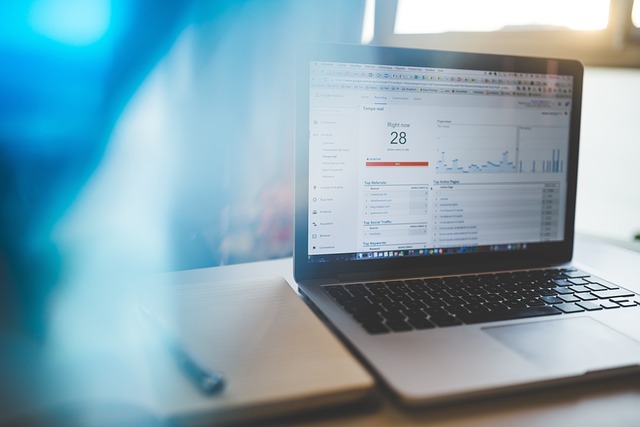In today's competitive culinary landscape, maintaining seafood freshness is critical for restaurant success and customer safety. Traditional methods are unreliable due to human error. AI seafood freshness monitoring systems leverage computer vision and machine learning to precisely gauge doneness while preserving quality. These systems offer real-time insights on temperature, color, and texture, enabling chefs to optimize cooking techniques and minimize food waste. By adopting AI solutions, restaurants can deliver consistently fresh, delicious seafood dishes, contribute to a more sustainable culinary experience, and enhance overall kitchen efficiency.
In the ever-evolving food industry, ensuring seafood doneness and freshness is paramount for safety and customer satisfaction. Traditional methods fall short in keeping pace with rising demand and dynamic consumer expectations. Enter AI seafood freshness monitoring systems—a game-changing technology revolutionizing seafood preparation. This article explores the urgent need for these innovative solutions, delves into their capabilities, and highlights the significant benefits and future implications they bring to seafood restaurants worldwide.
- Understanding the Need for AI Seafood Freshness Monitoring Systems
- How AI Can Revolutionize Seafood Doneness Recognition
- Benefits and Future Implications of AI in Seafood Restaurants
Understanding the Need for AI Seafood Freshness Monitoring Systems

In today’s culinary landscape, maintaining seafood freshness is paramount for restaurants to ensure customer satisfaction and safety. Traditional methods often rely on visual inspection and manual timing, which can be inconsistent and subject to human error. Here’s where AI seafood freshness monitoring systems step in as game-changers. These innovative technologies employ computer vision and machine learning algorithms to accurately determine when seafood is cooked to perfection, ensuring doneness without compromising quality or safety standards.
AI-driven solutions offer several advantages over conventional practices. They can continuously observe and analyze seafood during the cooking process, providing precise data on temperature, color, texture, and other critical factors. This real-time monitoring allows chefs to adjust cooking techniques accordingly, resulting in consistently fresh and deliciously prepared seafood dishes. Moreover, these systems can help reduce food waste by accurately predicting when seafood is ready, optimizing resource utilization and contributing to a more sustainable culinary experience.
How AI Can Revolutionize Seafood Doneness Recognition

Artificial Intelligence (AI) has the potential to revolutionize seafood doneness recognition, transforming the way the industry ensures food quality and safety. Traditional methods often rely on human assessment, which can be subjective and inconsistent. AI seafood freshness monitoring systems utilize computer vision and machine learning algorithms to analyze visual cues, such as color, texture, and shape changes, providing an objective measure of doneness. This technology can consistently and accurately determine when seafood is cooked to the desired level, minimizing overcooking or undercooking risks.
Moreover, AI systems can continuously learn and adapt, refining their models based on vast datasets of prepared seafood. This allows them to account for variations in ingredients, cooking techniques, and even individual preferences. With these advanced capabilities, AI seafood freshness monitoring systems offer a reliable solution for maintaining high-quality, safely cooked seafood, enhancing customer satisfaction, and streamlining kitchen operations.
Benefits and Future Implications of AI in Seafood Restaurants

The integration of AI technology into the culinary realm, particularly within seafood restaurants, offers a myriad of advantages and paves the way for exciting future possibilities. One of the most significant benefits is the potential to revolutionize seafood doneness recognition. AI-powered systems can analyze visual data from cameras placed over cooking surfaces or plates, accurately determining the perfect level of doneness for each dish. This ensures that customers receive their seafood precisely as ordered, eliminating overcooking or undercooking and enhancing overall dining satisfaction.
Moreover, AI seafood freshness monitoring systems can significantly impact waste reduction and food safety. By continuously assessing the quality and freshness of ingredients, these technologies can predict spoilage, enabling restaurants to manage inventory more efficiently. This not only minimizes financial losses but also contributes to a more sustainable culinary practice by reducing food waste. With its ability to process vast amounts of data, AI can identify trends, optimize menu planning, and even suggest innovative dishes based on seasonal ingredients, thus fostering creativity in the kitchen.
AI seafood freshness monitoring systems represent a significant leap forward for the industry, offering precise and efficient solutions to ensure optimal seafood doneness. By leveraging advanced algorithms and computer vision, these systems not only enhance food safety but also elevate the dining experience. The benefits are clear: improved customer satisfaction, reduced waste, and enhanced operational efficiency. As AI continues to evolve, its role in revolutionizing seafood restaurants is undeniable, promising a future where every dish served is perfectly prepared and deliciously fresh.
